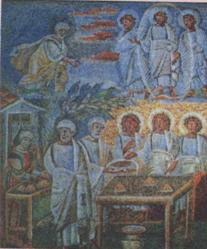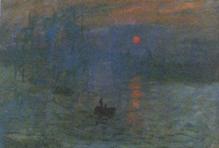普通高中课程标准实验教科书 英语选修6 Unit 1 Art-Reading(在线收听)
The Middle Ages (5th to the 15th century AD)

During the Middle Ages, the main aim of painters was to represent religious themes. A conventional artist of this period was not interested in showing nature and people as they really were. A typical picture at this time was full of religious symbols, which created feeling of respect and love for God. But it was evident that ideas were changing in the 13th century when painters like Giotto di Bondone began to paint religious scenes in a more realistic way.
The Renaissance (15th to 16th century)

During the Renaissance, new ideas and values graduallv replaced those held in the Middle Ages.People began to concentrate less on religious themes and adopt a more humanistic attitude to life. At the same time painters returned to classical Roman and Greek ideas about art. They tried to paint people and nature as they really were. Rich people wanted to possess their own paintings, so they could decorate their superb palaces and great houses. They paid famous artists to paint pictures of themselves, their houses and possessions as well as their activities and achievements.
One of the most important discoveries during this period was how to draw things in perspective. This technique was first used by Masaccio in 1428. When people first saw his paintings, they were convinced that they were looking through a hole in a wall at a real scene. If the roles of perspective had not been discovered, no one would have been able to paint such realistic pictures. By coincidence, oil paints were also developed at this time, which made the colours used in paintings look richer and deeper. Without the new paints and the new technique, we would not be able to see the many great masterpieces for which this period is famous.
Impressionism (late 19th to early 20th century)

In the late 19th century, Europe changed a great deal. from a mostly agricultural society to a mostly industrial one. Many people moved from the countryside to the new cities. There were many new inventions and social changes. Naturally, these changes also led to new painting styles. Among the painters who broke away from the traditional style of painting were the Impressionists, who lived and worked in Paris.
The Impressionists were the first painters to work outdoors. They were eager to show how light and shadow fell on objects at different times of day. However, because natural light changes so quickly, the Impressionists had to paint quickly. Their paintings were not as detailed as those of earlier painters. At first, many people disliked this style of painting and became very angr about it. They said that the painters were careless and their paintings were ridiculous.
Modern Art (20th century to today)

At the time they were created, the Impressionist paintings were controversial, but today they are accepted as the beginning of what we call "modem art". This is because the Impressionists encouraged artists to look at their environment in new ways. There are scores of modern art styles, but without the Impressionists, many of these painting styles might not exist. On the one hand, some modem art is abstract; that is, the painter does not attempt to paint objects as we see them with our eyes, but instead concentrates on certain qualities of the object, using colour, line and shape to represent them. On the other hand, some paintings of modern art are so realistic that they look like photographs. These styles are so different. Who can predict what painting styles there will be in the future?